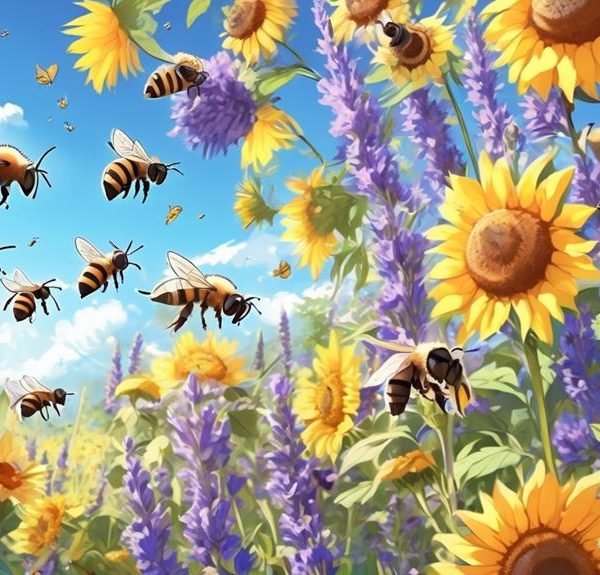Navigate the world of mason bees and discover the importance of selecting the right clay for their survival and propagation.
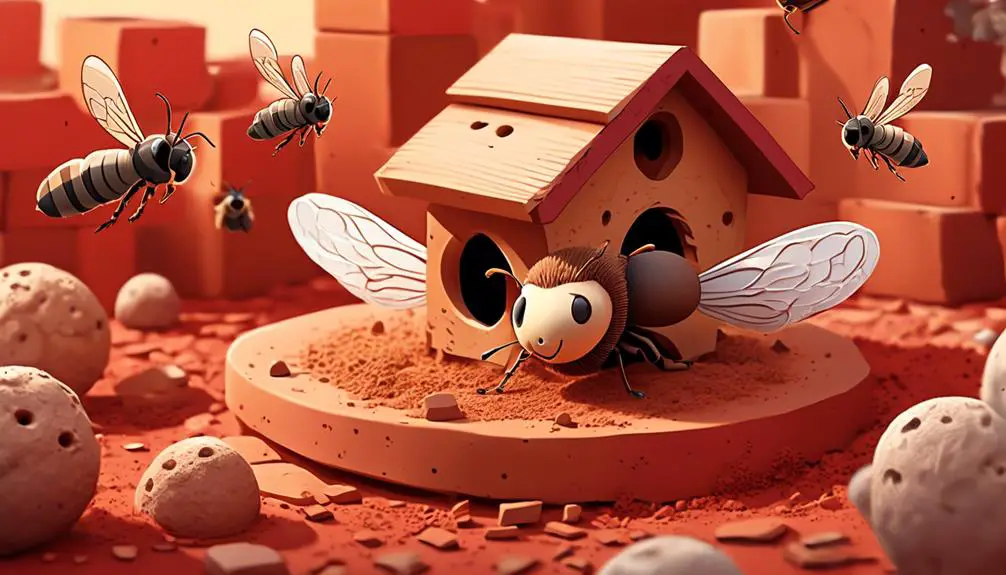
What Kind of Clay for Mason Bees?
Channeling your inner Da Vinci, imagine being as meticulous with choosing clay for mason bees as the great artist was with his sculptures.
You've likely discovered that these industrious little creatures have a knack for using clay in their nesting habits, but does it really matter what type of clay you provide?
In the world of mason bees, it's not just a matter of aesthetics. The choice of clay can significantly impact the survival and propagation of these beneficial insects.
So, sit tight, as we're about to unearth the secrets of selecting the right clay for your mason bees, an information that might just leave you buzzing with curiosity.
Key Takeaways
- Mason bees prefer naturally occurring, heavy clay soils with high plasticity.
- Clay walls provide insulation and protection for mason bee nests.
- Clay availability directly affects mason bee populations.
- Regular maintenance and moisture control are necessary to keep the clay workable for mason bees.
Understanding Mason Bees' Nesting Habits
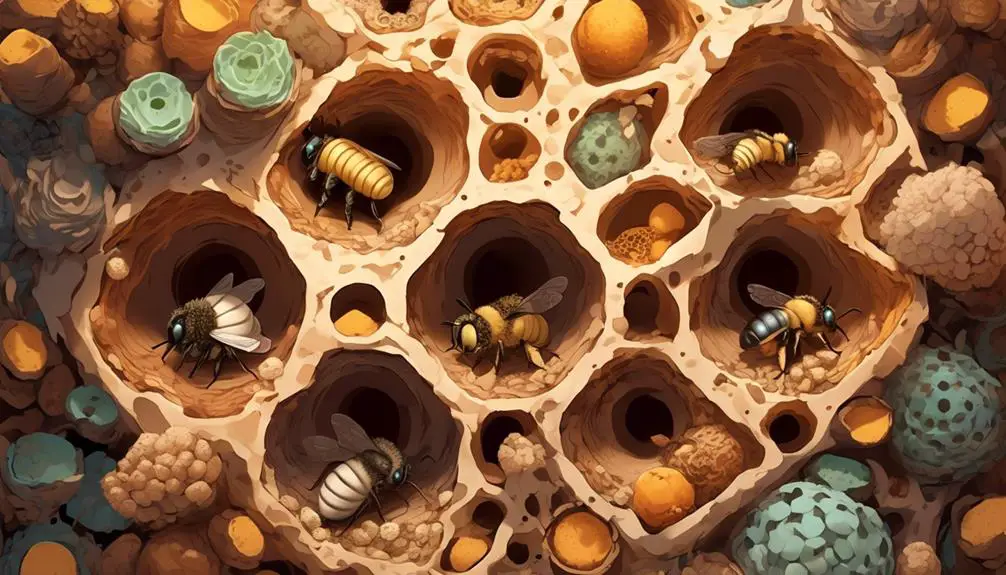
To fully appreciate the mason bees' affinity for clay, it's crucial to delve into their unique nesting habits. Unlike honey bees, mason bees are solitary insects. They don't live in colonies or hives; instead, they prefer small, tubular spaces where they can lay their eggs. You'll often find them nesting in the hollow stems of plants or in the tiny crevices of old wood.
But what sets mason bees apart is their preference for clay. They're named 'mason' due to their habit of using mud or clay to build and seal off their nests. Once a female mason bee finds a suitable spot, she'll start collecting clay. This isn't just any dirt; it needs to be of the right texture and consistency. She'll meticulously mold the clay into partitions, creating separate cells within the nest for each of her eggs.
Understanding these nesting habits is paramount when providing a habitat for mason bees. The clay you offer them should mimic their natural preference – not too sandy, not too sticky. It's a balancing act that, when mastered, can help support and conserve these beneficial pollinators.
Importance of Clay for Mason Bees

Understanding the significance of clay in a mason bee's life cycle, you'll quickly see it's not just about building materials, but also about survival and reproduction. Clay, with its unique properties, plays a pivotal role in the lifecycle of these industrious insects.
Importance of Clay | Impact on Mason Bees |
|---|---|
Provides Building Material | Clay is used by mason bees to construct their nests. Without it, they can't create the necessary chambers for their eggs. |
Affects Survival | The clay walls provide insulation from harsh weather and predators, significantly enhancing the bees' survival chances. |
Influences Reproduction | The safety and security offered by clay nests increase the probability of successful reproduction. |
Ensures Healthy Offspring | Clay-based nests provide a controlled environment for larvae, leading to healthier offspring. |
Sustains Bee Populations | Clay availability directly affects mason bee populations, highlighting its environmental importance. |
You see, clay isn't merely an architectural preference for these bees. It's a necessity, vital to their survival and propagation. Understanding this helps us comprehend the importance of preserving natural habitats, and could fuel efforts to conserve this unique species.
Types of Clay Suitable for Mason Bees
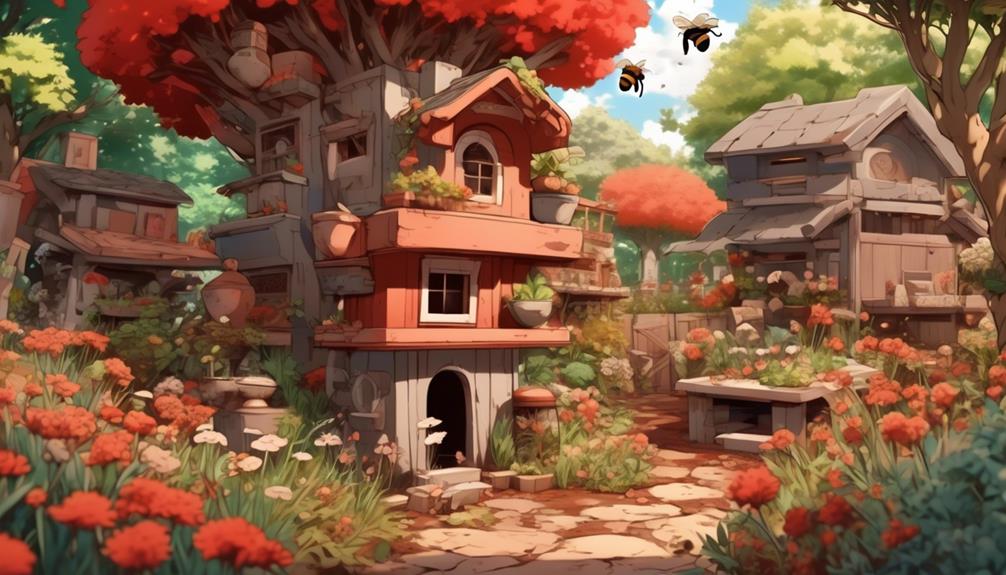
Delving into the subject of suitable clay types for mason bees, it's crucial to note that these industrious insects prefer naturally occurring, heavy clay soils abundant in minerals and nutrients. These soils, often known as loamy or clay loam, are rich in iron and aluminum silicates and provide the mason bees with an excellent material for nest construction.
The ideal clay for mason bees is high in plasticity, which enables the bees to mold it easily into the desired shape. Similarly, it must be able to retain its shape once molded and dry out without cracking or crumbling. These characteristics are typically found in clays with a high percentage of montmorillonite, a type of clay mineral.
You may also find mason bees favoring clays with a combination of silt, sand, and organic matter, creating a well-drained, fertile soil. This type of soil, known as loam, is another favorite among these bees.
How to Provide Clay for Mason Bees

Having identified the types of clay preferred by mason bees, it's essential to learn how to provide these specific soils to support their nesting habits.
Firstly, you need to locate a suitable spot in your garden. Your chosen location should be sunny, preferably facing east or south to catch the morning sun, with clay soil readily accessible and within 100 yards of the bees' nesting site.
Creating a clay source requires a few simple steps. Dig a small hole, about one foot deep and wide, and fill it with the appropriate type of clay.
It's crucial to keep the clay moist but not wet, as mason bees prefer mud consistency to build their nests. You can achieve this by lightly watering the clay regularly, especially during dry periods.
Tips on Maintaining Clay for Bees
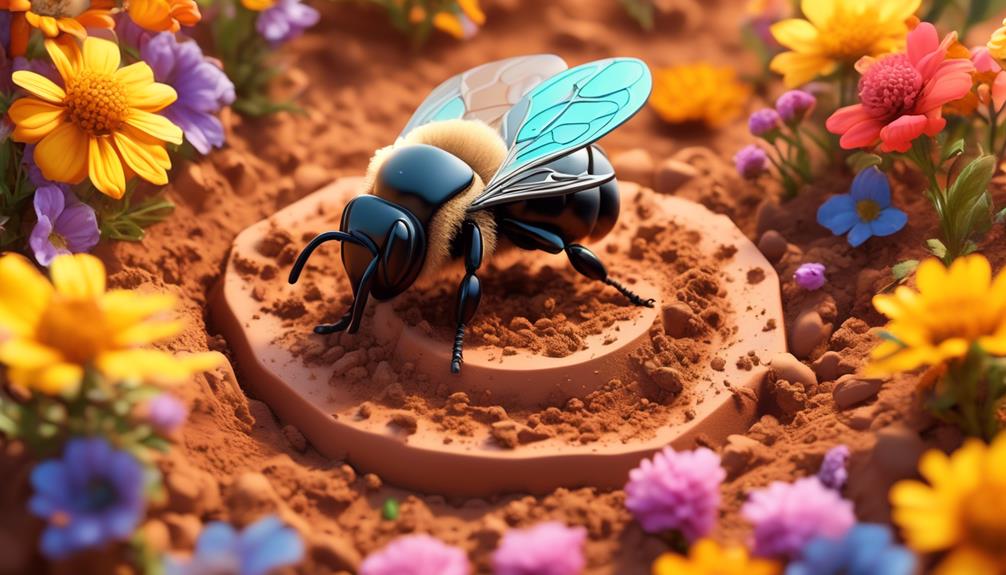
Regularly maintaining the clay for your mason bees ensures it remains in the optimal condition for their nesting needs. It's more than a simple duty—it's your responsibility as a beekeeper. Here are a few tips to help you maintain your clay in the best shape possible.
First, ensure the clay stays moist. Dry clay can become hard and unworkable for bees. Spritz it with water regularly, but take care not to oversaturate it, as too much water can make the clay too soft or cause it to wash away.
Second, keep the clay free from debris. Remove any rocks, sticks, or leaves that may have fallen into the clay area. These can obstruct the bees' access to the clay or impede their ability to mold it for their nests.
Lastly, keep an eye out for pests. Some insects and animals are attracted to clay and may interfere with the bees' nesting process. Regularly inspect the clay area and address any pest problems promptly.
Maintenance Action | Description |
|---|---|
Moisture Control | Regular spritzing to maintain workability, without oversaturation. |
Debris Removal | Regular clean-up of rocks, sticks, leaves. |
Pest Control | Regular inspection and prompt pest control. |
Follow these tips, and your bees will have a high-quality clay source for their nests.
Conclusion
In conclusion, mason bees need clay for their nesting habits. The best types of clay for these industrious pollinators are heavy, loamy soils.
You can provide clay by placing a small dish of moist clay near their nest. Remember, it's essential to keep the clay moist and replenish it regularly.
With the right care, you can support your local mason bee population and promote a healthy environment.

